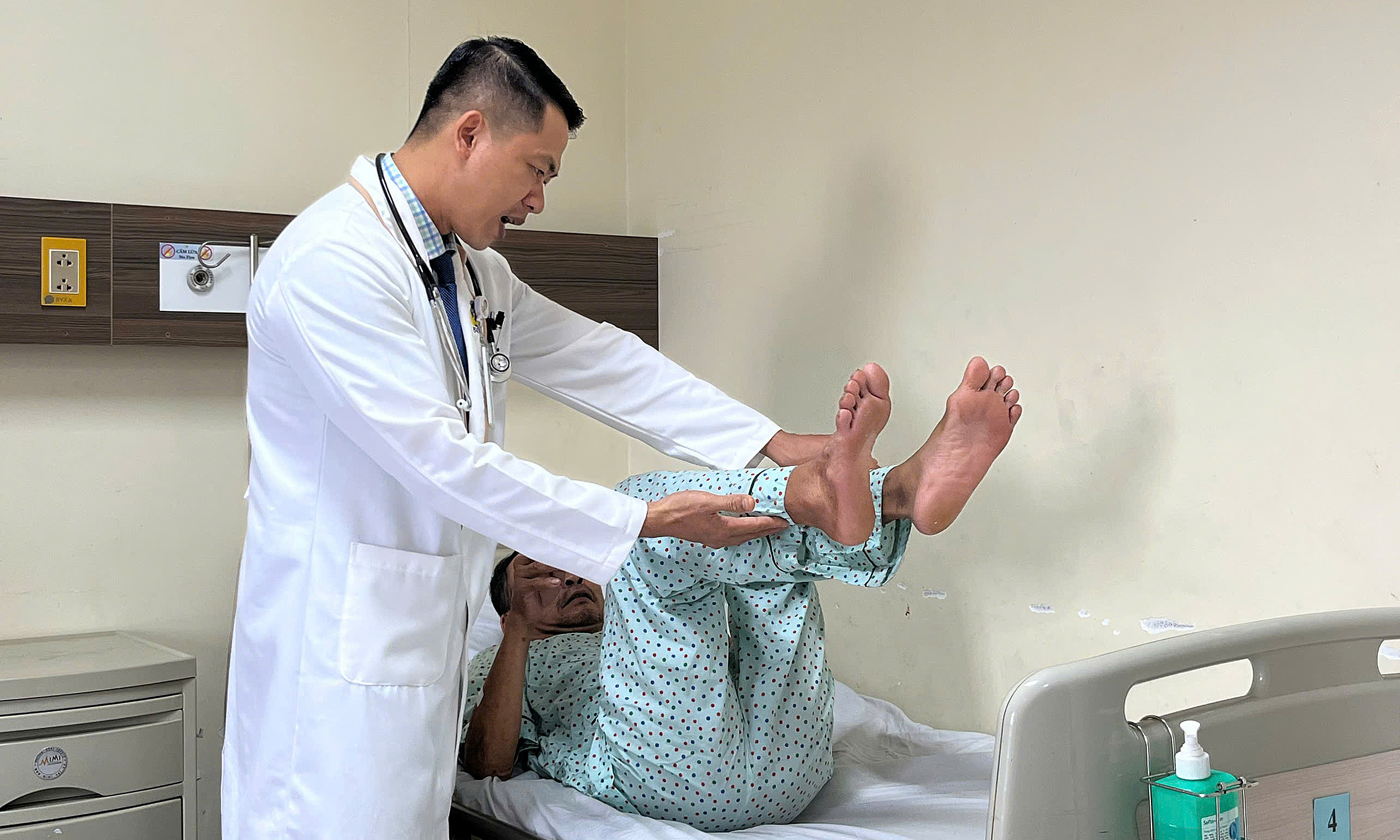The incident occurred on 1/8, when the man, while eating at home, suddenly experienced tinnitus, dizziness, and vomiting. Recognizing the signs of a stroke, his wife used a sewing needle to prick his fingertips and squeezed them to draw blood, but his condition didn't improve.
Hours later, upon arrival at the emergency department of Xuyen A General Hospital, the man was experiencing speech difficulties and paralysis on the right side of his body. He had several underlying health conditions, including hypertension, diabetes, a history of heavy smoking, and coronary artery stenosis for which he had two stents placed 8 years prior, but he had recently stopped treatment on his own.
Doctors suspected the stroke was caused by a blood clot that had formed and traveled from his heart to his brain. A CT scan of his brain revealed that the area of cerebral infarction was still within the "golden hour" for treatment – less than 4.5 hours from the onset of the first symptom. Therefore, the medical team immediately administered a thrombolytic injection in the CT room.
Simultaneously, a CTA scan was performed to assess the condition of the brain's blood vessels, revealing a blockage in the basilar artery, a major artery in the brain. Immediately afterward, a mechanical thrombectomy was performed to remove the blood clot.
The patient is now able to walk and perform daily activities without assistance.
 |
A doctor checks the patient's muscle strength after the intervention. Photo: *Hospital provided* |
Stroke is a sudden-onset medical condition with rapid progression and severe complications. It can occur at any age, mostly in people aged 55 and older, but there is a growing trend of it affecting younger individuals. Early signs of stroke include: hemiplegia (paralysis on one side of the body, noticeable when raising both arms to shoulder level, one arm will droop); facial nerve paralysis (facial drooping when baring teeth or smiling); and language disorder (understanding speech but being unable to express oneself or comprehend others).
When encountering someone experiencing a stroke, absolutely avoid applying hot oil, scraping, or bloodletting, or resorting to spiritual practices or folk remedies like pricking fingers or earlobes. Many people become confused when witnessing a stroke, believing that the patient shouldn't be moved due to potential danger. In reality, the victim should be transported quickly to the nearest medical facility equipped to handle strokes.
The correct first-aid procedure involves placing the patient in a lying position with their head elevated at an angle of about 30-40 degrees, loosening their clothing, turning them on their side to prevent choking, immobilizing them, and contacting emergency services to transport them to the nearest medical facility.
My Y












